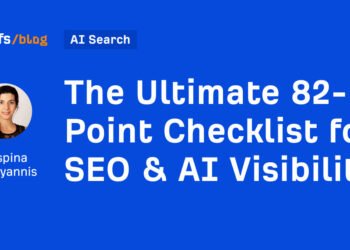Real-time risk monitoring has become essential for organizations facing rapid changes in technology, regulations, and market conditions. Modern enterprises deal with an increasing array of threats, from sophisticated cyber attacks to complex supply chain disruptions, making traditional periodic risk assessments insufficient. According to recent data from PwC’s Global Risk Survey, 95% of business leaders report the need to modify their risk management strategies to meet evolving challenges. This comprehensive guide examines how organizations can implement effective real-time risk monitoring systems, select appropriate tools, and integrate continuous monitoring into their existing risk management frameworks.
Understanding Real-Time Risk Monitoring
Real-time risk monitoring represents a fundamental shift from traditional risk management approaches. While conventional methods rely on periodic assessments and historical data analysis, real-time monitoring provides continuous surveillance of potential threats across multiple risk domains. This proactive approach allows organizations to detect and respond to emerging risks before they escalate into major incidents.
The significance of real-time monitoring becomes clear when examining recent statistics. According to IBM’s Cost of a Data Breach Report, organizations with automated security responses save an average of $3.05 million per incident compared to those without such capabilities. Similarly, McKinsey research indicates that companies implementing real-time supply chain monitoring reduce disruption-related costs by up to 50%.
Key Components of Real-Time Risk Monitoring Systems
Data Collection and Integration
Effective real-time monitoring begins with comprehensive data collection across various sources. Organizations must integrate data from internal systems, external feeds, and third-party providers. This includes financial transactions, network traffic, supplier performance metrics, and regulatory updates.
Modern monitoring systems typically incorporate multiple data types:
- Operational metrics from IoT devices and industrial systems
- Security logs and threat intelligence feeds
- Financial transaction data and market indicators
- Social media and news monitoring for reputational risks
- Weather and environmental data for physical risk assessment
Analytics and Processing
Advanced analytics form the backbone of real-time risk monitoring. Machine learning algorithms process vast amounts of data to identify patterns and anomalies that might indicate emerging risks. These systems become more accurate over time as they learn from historical incidents and outcomes.
According to Gartner research, organizations using AI-powered analytics in their risk management processes identify potential threats an average of 15 days earlier than those using traditional methods. This early warning capability proves particularly valuable in preventing financial fraud, where rapid detection can mean the difference between minimal and catastrophic losses.
Implementing Real-Time Risk Monitoring
Assessment and Planning
Before implementing a real-time monitoring system, organizations should conduct a thorough assessment of their risk landscape and current capabilities. This involves:
- Identifying critical risk domains requiring continuous monitoring
- Evaluating existing technology infrastructure and data sources
- Determining resource requirements and budget constraints
- Setting clear objectives and success metrics
Technology Selection and Integration
Choosing appropriate monitoring tools requires careful consideration of organizational needs and capabilities. Modern platforms typically offer:
- Cloud-based deployment options for scalability
- API integration capabilities for existing systems
- Customizable dashboards and reporting features
- Automated alert mechanisms
- Machine learning capabilities for predictive analytics
Building Response Protocols
Real-time monitoring systems must connect to clear response protocols. Organizations should develop detailed procedures for:
- Alert verification and assessment
- Incident escalation paths
- Communication protocols
- Response team activation
- Documentation requirements
Best Practices for Continuous Monitoring
Risk Prioritization
Organizations should focus monitoring efforts on their most critical risks. The National Institute of Standards and Technology (NIST) recommends a risk-based approach that considers:
- Potential impact on business objectives
- Likelihood of occurrence
- Speed of impact
- Detection difficulty
- Recovery complexity
Data Quality Management
Maintaining high-quality data proves essential for effective monitoring. Organizations should establish:
- Data validation procedures
- Regular accuracy checks
- Source verification protocols
- Data cleaning processes
- Update frequency requirements
Training and Culture
Success in real-time risk monitoring requires more than just technology. Organizations must develop a risk-aware culture through:
- Regular staff training on monitoring tools
- Clear communication of risk management objectives
- Recognition of proactive risk identification
- Integration of risk awareness into daily operations
Measuring Success and Continuous Improvement
Key Performance Indicators
Organizations should track specific metrics to evaluate their monitoring effectiveness:
- Mean time to detect (MTTD) for various risk types
- False positive rates
- Response time measurements
- Risk mitigation success rates
- System availability and reliability
Regular Review and Updates
Continuous improvement requires regular system reviews and updates:
- Quarterly assessment of monitoring effectiveness
- Annual review of risk priorities and coverage
- Regular updates to response protocols
- Periodic testing of backup systems
- Technology upgrade evaluations
Conclusion
Real-time risk monitoring represents a critical capability for modern organizations facing increasingly complex threat landscapes. Success requires a combination of appropriate technology, well-designed processes, and a strong risk management culture. Organizations should begin by assessing their current capabilities and risk priorities, then implement monitoring systems gradually, focusing first on their most critical risks.
Next steps for organizations looking to implement or improve their real-time risk monitoring include:
- Conduct a comprehensive risk assessment to identify monitoring priorities
- Evaluate current technology capabilities against monitoring requirements
- Develop a phased implementation plan with clear milestones
- Build internal capabilities through training and process development
- Establish metrics for measuring monitoring effectiveness
By following these guidelines and maintaining a commitment to continuous improvement, organizations can build robust real-time risk monitoring capabilities that enhance their resilience and competitive position in an increasingly uncertain business environment.















